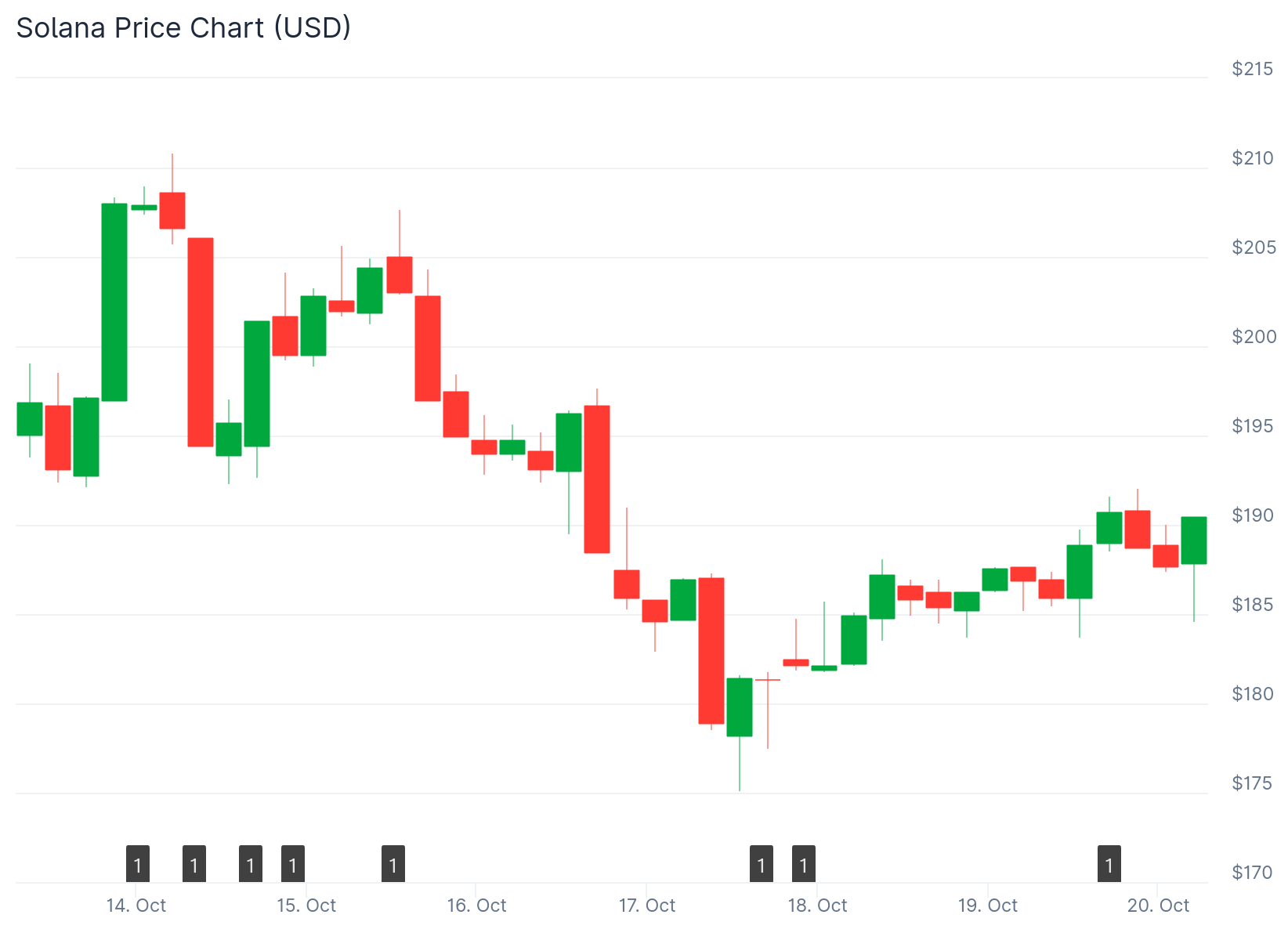TLDR
- Solana’s network generates $5 billion yearly from transaction fees, averaging $425 million per month
- Transaction costs average just $0.02 with block production times of 400 milliseconds and 12-13 second finalization
- More than 1,000 full-time developers work on Solana, building applications across DeFi, telecommunications, and consumer technology
- Grayscale analysis shows institutional investors are increasingly interested in Solana’s high-speed, low-cost blockchain
- SOL staking offers 7% annual yields, with net returns of 2.5-3% after inflation adjustments
Solana is drawing increased attention from institutional investors. A recent Grayscale analysis highlights the blockchain’s appeal based on transaction speed and cost efficiency.

The report emphasizes Solana’s strong position among smart contract platforms. The network handles high transaction volumes while maintaining extremely low fees. This combination has attracted both developers and end users.
Solana hosts diverse decentralized applications across multiple sectors. DeFi platforms like Raydium operate alongside consumer-focused apps such as Pump.fun and Helium. The blockchain serves financial technology, telecommunications, and consumer tech industries.
The network produces approximately $425 million in monthly fee revenue. Annual fees total more than $5 billion. These figures demonstrate substantial on-chain economic activity.
Technical Performance Drives User Growth
Solana’s average block production time is 400 milliseconds. Transaction finalization occurs within 12 to 13 seconds. These speeds position Solana among the fastest available blockchains.
Average transaction fees remain at $0.02 per transaction. Low costs combined with fast processing have encouraged widespread adoption. Both application developers and regular users benefit from this efficiency.
The developer community includes over 1,000 full-time contributors. They continuously enhance the protocol and create new applications. This active development supports ongoing network innovation and expansion.
Staking Rewards and Network Economics
The SOL token operates as the native currency of the Solana blockchain. Token holders use SOL for transactions and application interactions. The token also enables participation in network security through staking.

Staking SOL generates yields near 7% annually. The network’s token supply inflates at 4% to 4.5% per year. After accounting for inflation, stakers receive real returns between 2.5% and 3%.
Developers have proposed the SIMD-0370 update through the Firedancer project. This proposal would eliminate per-block compute limits. The change aims to increase network throughput following validator upgrades.
Community review of the proposal continues. Approval would enhance Solana’s scalability capabilities. Higher throughput would improve network stability during peak demand periods.
Market Outlook and Institutional Access
Analyst Lark Davis forecasts SOL could reach $425. Market participants watch for potential spot ETF approval. An approved ETF would simplify institutional investment in Solana.
Approximately 547 million SOL tokens currently circulate. The network uses Proof of History combined with Proof of Stake consensus mechanisms. This architecture enables rapid transaction processing.
Trading platforms like Jupiter generate substantial volume on Solana. DeFi protocols and stablecoin applications continue integrating with the ecosystem. The network maintains strong fundamentals despite market volatility.
Institutional interest reflects Solana’s technical capabilities and growing user base. The blockchain’s low-cost structure appeals to organizations exploring blockchain technology. Network fee generation demonstrates real-world utility and adoption.



